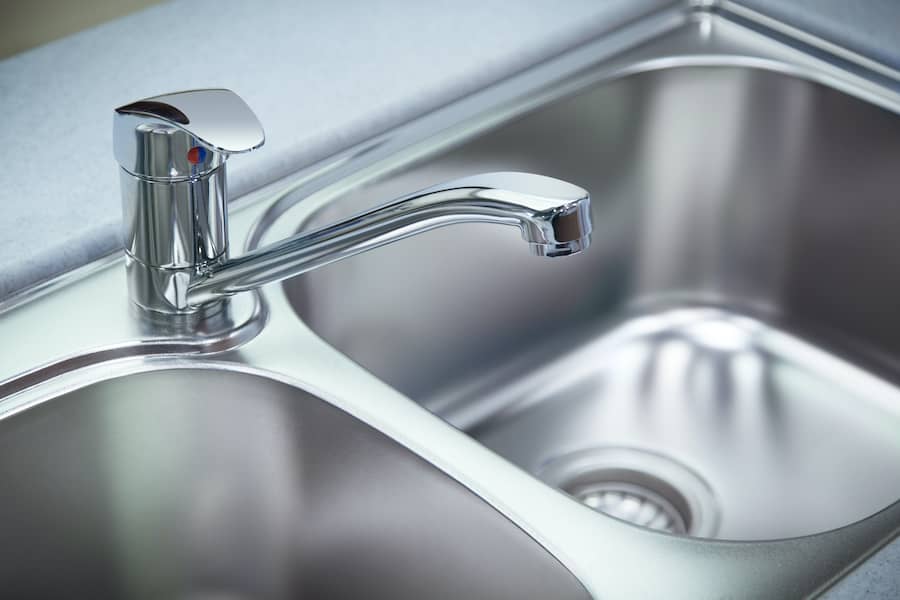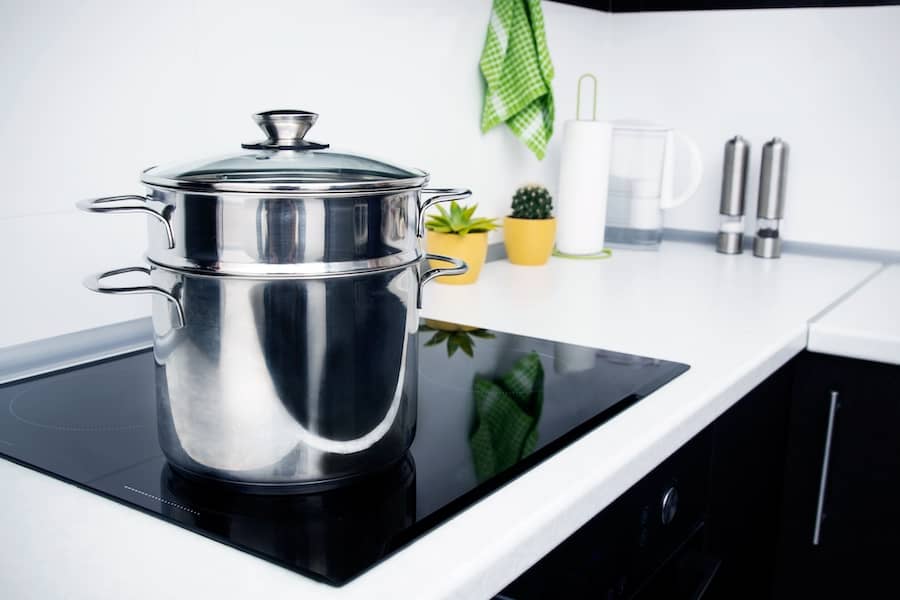Ferritic Stainless Steel: Properties, Grades, and Applications
Ferritic stainless steels are the next most widely used type of stainless steel after austenitic stainless steel. They contain very low levels of carbon, high amounts of chromium but little or no nickel, and they are known for their ductility, corrosion-resistance and magnetic properties. They have a body-centred cubic grain structure, and they cannot be hardened through heat treatment, but they can be cold worked and softened through annealing.
Ferritic stainless steels are classified into the 400 series, which are further classified into five groups depending on their composition and application. Ferritic stainless steels were developed relatively early, but their widespread application didn’t happen until the 1980s when they became a viable alternative to austenitic stainless steels as they were more expensive due to their nickel content [1].
In this article, you will learn about:
- The properties of ferritic stainless steel
- The applications of ferritic stainless steel
- Grades and standards of ferritic stainless steel
- Future trends of ferritic stainless steel

The properties of ferritic stainless steel
Ferritic stainless steels are characterised by their body-centred cubic (BCC) crystal structure, and they contain 11% to 27% chromium and small amounts of ferrite stabilisers, such as niobium and titanium. Ferritic alloys exhibit ferromagnetic behaviour up to a temperature known as the Curie point (650 °C – 750 °C), beyond which materials lose their permanent magnetic properties.
The BCC grain structure of ferritic alloys, which is the same as that of pure iron at room temperature, is the reason for its magnetic nature. Ferritic stainless steels, similar to austenitic stainless steels, cannot be strengthened by heat treatment [1].
Ferritic stainless steels are not as resistant to corrosion as austenitic steels, but they still possess very good corrosion and oxidation resistance. They have good resistance to stress-corrosion cracking, and they generally have better engineering properties including ductility and formability than austenitic alloys. Although ferritic alloys are weldable, some problems such as cracking along the heat-affected zones exist [3].
Table 1. Properties of selected ferritic stainless steels.
|
|
|||||
|
Composition |
Cr 10.5 – 11.7 % |
Cr 16 – 18 % |
Cr 11.5 – 14.5 % |
Cr 16 – 18 % |
Cr 17.5 – 19.5 % |
|
Si 1 % |
Si 1 % |
Si 1 % |
Si 1 % |
Mo 1.75 – 2.5 % |
|
|
Mn 1 % |
Mn 1 % |
Mn 1 % |
Mn 1 % |
Mn 1 % |
|
|
Ni 0.5 % |
P 0.04 % |
Ni 0.6 % |
Mo 0.75 – 1.25 % |
Ni 1% |
|
|
C 0.06 % |
C 0.04 % |
C 0.08 % |
C 0.12 % |
C 0.03 % |
|
|
220 GPa at 20 °C |
220 GPa at 20 °C |
220 GPa at 20 °C |
220 GPa at 20 °C |
220 GPa at 20 °C |
|
|
550 MPa at 20 °C |
595 MPa at 20 °C |
415 MPa at 20 °C |
450 MPa at 20 °C |
415 MPa at 20 °C |
|
|
6E-7 - 7.5E-7 Ω·m at 20 °C |
6E-7 - 7.5E-7 Ω·m at 20 °C |
6E-7 - 7.5E-7 Ω·m at 20 °C |
6E-7 - 7.5E-7 Ω·m at 20 °C |
6E-7 - 7.5E-7 Ω·m at 20 °C |
|
|
9.3E-6 – 1.2E-5 1/K at 20 °C |
9.3E-6 – 1.2E-5 1/K at 20 °C |
9.3E-6 – 1.2E-5 1/K at 20 °C |
9.3E-6 – 1.2E-5 1/K at 20 °C |
9.3E-6 – 1.2E-5 1/K at 20 °C |
|
|
11 - 22 W/(m·K) at 20 °C |
11 - 22 W/(m·K) at 20 °C |
11 - 22 W/(m·K) at 20 °C |
11 - 22 W/(m·K) at 20 °C |
11 - 22 W/(m·K) at 20 °C |
|
|
Melting point |
1375 - 1450 °C |
1375 - 1450 °C |
1375 - 1450 °C |
1375 - 1450 °C |
1375 - 1450 °C |
|
420 - 586 J/(kg·K) at 20 °C |
420 - 586 J/(kg·K) at 20 °C |
420 - 586 J/(kg·K) at 20 °C |
420 - 586 J/(kg·K) at 20 °C |
420 - 586 J/(kg·K) at 20 °C |
The applications of ferritic stainless steel
The magnetic properties of ferritic grades is a major advantage and enabler for many of their applications. Fastening parts and induction heating, for example, both make use of this property in the production of induction cookers and magnetic fasteners.
Ferritic alloys also have a lower thermal expansion coefficient and higher thermal conductivity than austenitic grades, which makes them particularly suitable for heat transfer applications such as cooking utensils.
The corrosion resistance of some ferritic stainless steels is sufficient to replace austenitic steel 304, and they can be used in the production of dishwashers, kitchen sinks and food processing equipment.
Some specialty grade ferritic stainless steels have additional molybdenum and higher chromium content, which makes them useful in corrosive seawater applications.
The unique set of properties of ferritic stainless steels makes them useful in the automobile industry and nuclear reactors.

Grades and standards of ferritic stainless steel
Ferritic stainless steels are classified into AISI grades 1 to 5, with grades 1 to 3 referred to as standard grades and grades 4 and 5 referred to as speciality grades. Standard grades are the most commonly used, whereas speciality grades are used only in special cases.
Table 2. Classification and composition of common ferritic stainless steels [4].
|
|
Typical composition (%) |
||||
|
Group |
AISI designation |
C |
Cr |
Mo |
Other |
|
1 |
410S |
0.08 |
12 |
||
|
1 |
409 |
0.03 |
11 |
0.5 Ti |
|
|
2 |
430 |
0.08 |
17 |
||
|
2 |
430Nb |
0.05 |
17 |
0.6 Nb |
|
|
3 |
430Ti |
0.05 |
17 |
0.6 Ti |
|
|
4 |
434 |
0.08 |
17 |
1 |
|
|
4 |
444 |
0.02 |
18 |
2 |
0.4 (Ti+Nb) |
|
5 |
446 |
0.15 |
24 |
|
|
|
5 |
447 |
0.01 |
29 |
3.8 |
0.1Cu, 0.1Ni |
Future trends of ferritic stainless steel
Super-ferritic alloys are low-carbon/nitrogen content grades which contain higher chromium (up to 30%), molybdenum (up to 4%), and nickel (up to 2%). Although initially developed in the 1970s as a possible alternative to titanium in seawater and high chloride applications due to titanium’s scarcity and high price, super-ferritic alloys didn't prove a popular option.
Nowadays, super-ferritic alloys are now being explored as an alternative to super-austenitic alloys, as nickel and molybdenum prices are soaring due to their high demand in the production of austenitic grades. E-Brite®, Monit® and SEA-CURE® are some examples of commercially available super-ferritic alloys [5].
Group 1: This group contains the lowest amount of chromium and is, therefore, the most inexpensive. Steels from this group exhibit limited corrosion resistance, and so they are used in applications where some localised rusting can be tolerated.
Group 2: This group constitutes the vast majority of ferritic stainless steel usage. These steels have a higher chromium content and so have a better corrosion resistance than group 1 ferritic steels.
Group 3: This group of ferritic stainless steels have better weldability and formability than group 2 and in some applications can serve as a substitute to 304 austenitic stainless steels.
Group 4: This group of speciality ferritic stainless steels has a higher molybdenum content which contributes to its enhanced corrosion resistance.
Group 5: This group is the second member of the speciality group, and it has a high chromium content with molybdenum added in as well, which gives it very good corrosion and scaling resistance.

Sources
[1] J. Charles et al., "The ferritic stainless family: The appropriate answer to nickel volatility?," Revue de Métallurgie, vol. 106, 3, pp. 124–139, Jan. 1959.
[2] “Introduction to Stainless Steels,” in Alloy Digest Sourcebook: Stainless Steels, ASM International, 2000, p. 584. [Online]. Available: https://www.asminternational.org/documents/10192/1849770/06940G_Chapter_1.pdf/53f29213-5dd6-4499-9959-841477b385b9.
[3] T. Bell, "Ferritic Stainless Steel." ThoughtCo, Feb. 5, 2020. [Online]. Available: thoughtco.com/metal-profile-ferritic-stainless-steel-2340133.
[4] P. Lambert, “Sustainability of metals and alloys in construction,” in Sustainability of Construction Materials, J. M. Khatib, Ed. Woodhead Publishing, 2016, p. 584. [Online]. Available: https://www.sciencedirect.com/science/article/pii/B9780081003701000068. [Accessed May 27, 2005].
[5] D. S. Janikowski and W. Henricks, "Superferritic Stainless Steels – The Cost Effective Answer for Heat Transfer Tubing," International Desalination Association World Congress, Ref: MP07-016. [Online]. Available: https://www.plymouth.com/wp-content/uploads/2017/03/Super-Ferritic-Stainless-Steels.pdf.